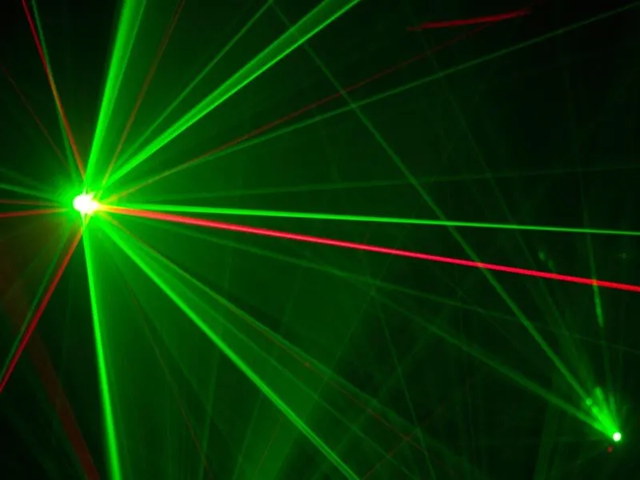Sponsored by NanoImagesReviewed by Olivia FrostAug 18 2025
When studying biological systems, understanding structure and chemistry often calls for different approaches. Scanning electron microscopy (SEM) is particularly useful for revealing ultrastructural features of cells, tissues, and biomaterials at the nanometer scale.
Raman spectroscopy, on the other hand, generates a label-free molecular fingerprint for such structures. Raman-SEM combines these two techniques into a single platform, allowing researchers to simultaneously answer two crucial questions: "What does this structure look like?" and "What is it made of?".
This correlational method has revolutionized biological imaging. Scientists can detect nucleic acids, lipids, proteins, and other biomolecules by studying their spatial organization without using dyes or stains. The result is a detailed, multidimensional perspective of life at the microscopic level.
Advantages of Raman-SEM for Biological Samples
One of the most notable advantages of Raman-SEM is its capacity to provide label-free molecular identification.
Raman spectroscopy detects inherent vibrational modes in molecules, allowing researchers to distinguish between cellular components based on their original chemistry. For example, a nucleus rich in DNA/RNA and a lipid droplet made up of hydrocarbon chains can be differentiated without the use of fluorescent markers.
The combination of Raman and SEM results in exact co-localization. The Raman laser may rapidly examine features indicated in the electron image, such as a specific bacteria, organelle, or tissue boundary. This matching of structural and chemical data improves interpretation and allows for more accurate biological conclusions.
Raman-SEM requires minimal further preprocessing. Standard SEM techniques (fixation, dehydration, and conductive coating) are often sufficient.
There is no need for additional chemical treatments, which preserves sample integrity and streamlines workflow. In many cases, even the conductive coating is suitable for Raman investigation, allowing spectra to be obtained from the exact SEM-imaged regions.
Because Raman spectroscopy is non-destructive, it is appropriate for analyzing valuable or rare biological samples. Researchers can perform various analyses sequentially—first imaging, then spectroscopy—without changing the sample. This capability is particularly useful in investigations involving restricted or irreplaceable material, such as patient-derived biopsy sections.
Raman-SEM provides multimodal insights throughout a single session. A tissue section, for example, may produce a high-resolution SEM image of cellular structure, an EDS spectrum indicating elemental composition (e.g., calcium), and a Raman scan identifying the calcium compound as hydroxyapatite. This extensive data set facilitates deeper biological comprehension in fewer stages.

Raman Laser. Image Credit: NanoImages
Biological Research Applications
Studying Cells and Organelles
Raman-SEM is very effective in cellular studies. SEM visualizes membranes, cilia, and intracellular structures with high clarity, whereas Raman spectroscopy reveals their molecular signatures.
In terms of evaluating medication delivery, SEM can detect drug-loaded nanoparticles within a cell, and Raman can validate their chemical identification, ensuring compound presence and stability in situ.
Similarly, the approach can target specific organelles. A mitochondrion visible in SEM can be chemically profiled using Raman to determine its lipid-to-protein ratio or detect metabolic activity. Such a study is useful in a variety of domains, including cancer biology and virology.
Tissue Imaging and Biomaterial Evaluation
Raman-SEM provides insights into tissue disease that extend beyond morphology. For example, comparing tumor regions to nearby healthy tissue with SEM may reveal structural disorder. Raman spectra from the same locations may reveal variations in protein or lipid composition, which might aid in disease diagnosis or study.
This technique is used in bioengineering to evaluate biomaterials such as scaffolds and implants. SEM reveals how cells interact with these materials—adhering, spreading, or integrating—while Raman detects biochemical changes such as mineral deposition or collagen creation. This dual perspective aids in material design for tissue regeneration.
NanoImages’ Integrated Raman-SEM System
NanoImages provides a complete solution with its tabletop SEM equipped with the Waviks Vesta™ Raman spectrometer. This all-in-one system allows labs to do advanced correlative imaging without using many instruments or complex alignments.
The system is designed to be user-friendly and allows for seamless switching between SEM and Raman modes. Users can select a location in the electron image to obtain a Raman spectrum at that specific area.
Integrated software automatically overlays chemical data on the structural map, reducing alignment errors and facilitating interpretation. Importantly, the Raman addition does not affect SEM performance, allowing for image resolution of roughly 5 nm while also performing micron-scale spectral analyses.
Workflow efficiency is a significant advantage. With the sample still in place, researchers can quickly transition from loading to a complete structural and chemical data set.
For example, investigating a plant leaf may entail photographing surface texture, mapping calcium distribution with EDS, and identifying chemicals such as chlorophyll or cellulose with Raman—all on the same platform in a single session.
Closing Thoughts on Using Raman-SEM in Bioimaging
Raman-SEM in biology enables thorough examination of biological samples, combining high-resolution imaging with chemical specificity. This combined perspective yields insights unavailable through SEM or Raman alone, providing a holistic dataset that encompasses both shape and function.
As integrated systems such as NanoImages' tabletop Raman-SEM become more common, life science research will benefit greatly.
From illness diagnosis and cellular response monitoring to the development of superior biomaterials, this technology provides scientists with the tools they need to explore biology further. The result is faster discovery and stronger, evidence-based conclusions.

This information has been sourced, reviewed and adapted from materials provided by NanoImages.
For more information on this source, please visit NanoImages.